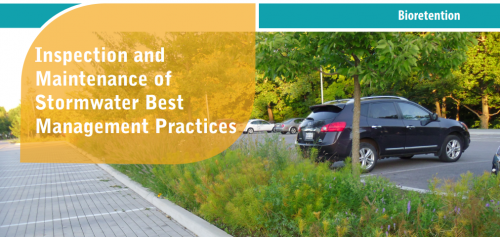Inspection and Maintenance: Bioretention & Bioswales

Overview[edit]
Bioretention treats stormwater by slowing it down, filtering it through soil and plant roots, soaking it into the ground and evaporating it back to the atmosphere. Runoff water is delivered to the practice through inlets such as curb cuts, spillways or other concrete structures, sheet flow from pavement edges, or pipes connected to catchbasins or Downspout disconnection roof downspouts. The planting bed and side slopes are typically covered with a mixture of plants, mulch and stone. Water in excess of its storage capacity overflows to another BMP or the municipal storm sewer. Filtered water is either infiltrated into the underlying soil to replenish groundwater, or collected by a sub-drain (i.e., underground perforated pipe) and discharged to the storm sewer system or another BMP. Depending on the permeability of the underlying soil or other constraints, it may be designed with no sub-drain for full infiltration, with a sub-drain for partial infiltration, or with an impermeable liner and sub-drain for a no infiltration practice. The sub-drain pipe may feature a flow restrictor (e.g., orifice cap or valve) for gradually releasing detained water and optimizing the amount drained by infiltration. Key components of bioretention practices for inspection and maintenance described further below.
Associated Terminology[edit]
- Bioretention cell: A flat-bottomed, depressed planting bed containing filter media soil, a gravel water storage layer and optional sub-drain pipe(s); Also known as a rain garden.
- '''Stormwater planters''': A bioretention cell contained within an engineered (e.g., concrete) structure.
- Biofilter: Bioretention cell or swale with an impermeable liner or containment structure and sub-drain.
- '''Dry swale''' or Bioretention swale: A gently sloping, linear oriented bioretention practice designed to be capable of conveying water across an elevation gradient. Also known as a bioswale or dry swale.
- ↑ TRCA. 2016. Fact Sheet - Inspection and Maintenance of Stormwater Best Management Practices: Bioretention. https://sustainabletechnologies.ca/app/uploads/2018/02/Bioretention-and-Dry-Swales-Fact-Sheet.pdf